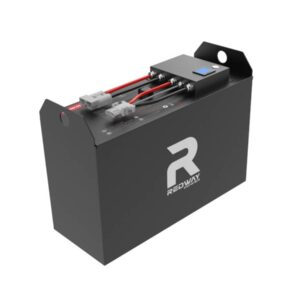Can you use a car battery on a forklift?
Car batteries are not suitable for forklifts due to fundamental design differences. Automotive batteries (SLI type) provide short bursts of high current for engine starting, while forklift traction batteries are deep-cycle units engineered for sustained power delivery over 6–8 hour shifts. Using car batteries risks premature failure, voltage drops under load, and safety hazards from incompatible charging protocols.
How to Maximize Forklift Battery Lifespan
Why can’t car batteries power forklifts effectively?
Car batteries lack the deep-cycle endurance needed for material handling. Their thin lead plates degrade rapidly when discharged below 50% capacity, unlike forklift batteries with 2–3x thicker plates for daily 80% depth-of-discharge cycles.

Automotive units typically deliver 600–800 cold cranking amps (CCA) for 3–5 seconds, whereas a 36V 500Ah forklift battery sustains 300A for 2+ hours. Imagine demanding marathon-level stamina from a sprinter—the car battery’s thin plates would warp within weeks. Pro Tip: Check battery labels for “RC” (reserve capacity) ratings; forklift batteries have RC values exceeding 180 minutes vs. car batteries’ 90–120 minutes.
What voltage discrepancies exist between the systems?
Most forklifts operate on 24V, 36V, or 48V systems, while car batteries are 12V. Connecting two 12V car batteries in series creates 24V but doubles the failure risk through cell imbalance.
Consider a 48V forklift needing four 12V batteries. If one car battery ages faster, the entire bank becomes unbalanced. This forces the BMS to disconnect prematurely, leaving 25–40% capacity unused. Forklift-specific batteries use robust 2V cells wired in series, with maintenance equalization cycles to prevent imbalance.
| Parameter | Car Battery | Forklift Battery |
|---|---|---|
| Typical Voltage | 12V | 24V–80V |
| Cycle Life | 200–300 cycles | 1,500–2,000 cycles |
| Plate Thickness | 1.0–1.5mm | 4.0–6.0mm |
Battery Expert Insight
Should You Upgrade to a Lithium Forklift Battery?
FAQs
What happens if I install car batteries in a forklift?
Expect 60–75% reduced runtime, terminal corrosion from acid spills, and possible thermal runaway during charging. The forklift’s 15–30A charger will overheat car batteries designed for 5–10A alternators.
